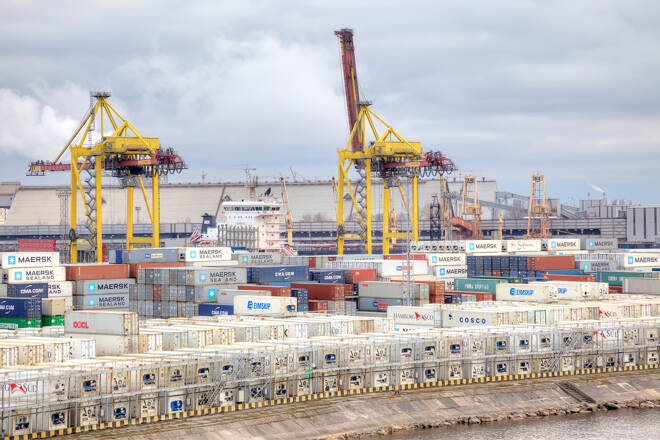Advertisement
Advertisement
German Retail Sales and Euro Area PMIs Could Limit an ECB Policy Move
By:
It was a busy morning on the economic calendar. Economic data from Germany and the euro area raised question marks over the ECB's policy goals.
It was a busy morning on the Eurozone economic calendar. Early in the European session, German retail sales drew interest. However, November manufacturing PMI numbers for Italy and Spain and finalized PMIs for France, Germany, and the Eurozone also influence.
German Retail Sales Fall as Consumers Ready for Surge in Energy Bills
In October, consumer prices slid by 2.8%, reversing a 1.2% increase in September. Economists forecast a 0.6% decline.
The fall in spending aligned with the GfK Consumer Climate survey, which revealed a fall in the propensity to buy sub-component. Fears of soaring energy bills led to the decline, signaling consumer plans to reduce spending.
Manufacturing Sector PMIs Continue to Paint a Grim Economic Landscape
Things were marginally better for the manufacturing sector.
Spain’s manufacturing PMI rose from 44.7 to 45.7, with Italy’s PMI up from 46.5 to 48.4. Economists forecast PMIs of 45.6 and 47.0, respectively.
However, finalized manufacturing PMIs for France, Germany, and the Eurozone fell short of prelim numbers.
France’s manufacturing PMI rose from 47.2 to 48.3 versus a prelim 49.1. Germany’s PMI increased from 45.1 to 46.2 versus a prelim 46.7.
In November, the Eurozone manufacturing PMI rose from 46.4 to 47.1 versus a prelim 46.4.
According to the Markit survey,
- The contractions in new orders and output were less marked in November.
- Inflationary pressures eased further due to improved supply chain conditions and weaker demand.
- Ireland and the Netherlands reported worsening manufacturing sector conditions.
- As a result of lower purchasing activity, input stocks accumulated despite manufacturers cutting purchasing activity.
- Firms continued to hire despite pessimism towards the 12-month outlook.
How PMI Impact the Market
Ahead of today’s stats, the EUR fell to a pre-stat low of $1.04022 before rising to a pre-stat high of $1.04480.
However, in response to the German retail sales figures, the EUR/USD fell to a low of $1.03933. PMI numbers provided support. The EUR/USD revisited $1.04469 before easing back.
The latest consumption and manufacturing PMI numbers will raise concerns over the impact of another 75-basis point ECB rate hike on the euro area economy.
At the time of writing, the EUR was up by 0.25% to $1.04331.
What is Next
ECB members Andrea Enria, Philip Lane, and Frank Elderson will speak today, with news from the General Council meeting of the ECB also needing consideration.
On the US economic calendar, inflation, personal spending, ISM Manufacturing PMI, and weekly jobless claims are due. Barring a sharp fall in jobless claims, we expect the inflation and spending numbers to have more influence on the dollar.
Following Powell’s less dovish comments from Wednesday, FOMC member chatter will also provide direction. FOMC members Barr, Logan, and Bowman speak today.
About the Author
Bob Masonauthor
With over 28 years of experience in the financial industry, Bob has worked with various global rating agencies and multinational banks. Currently he is covering currencies, commodities, alternative asset classes and global equities, focusing mostly on European and Asian markets.
Advertisement
